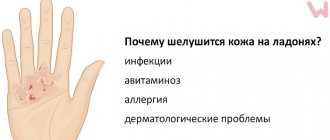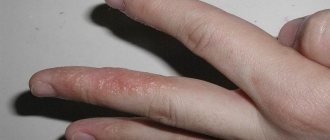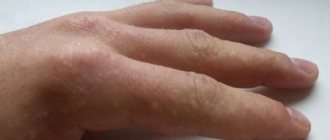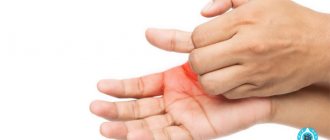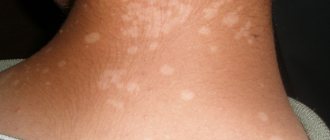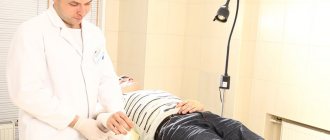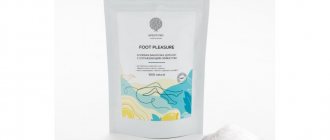The skin of the hands is quite sensitive and comes into contact with various objects more often than any other. It is negatively affected by weather conditions, various hygiene products or chemical reagents. As a result, the epidermis flakes, becomes excessively dry and comes off in thin flakes. In adults and children, such manifestations are observed quite often and may indicate serious disturbances in the functioning of internal organs. To eliminate pathology, various creams, oils and other effective remedies are used. At home, treatment can be carried out using traditional methods.
- Oils
Why does the skin on my fingers burst and peel off?
The skin on the surface of the fingers bursts and peels off if the person facing this problem has a concomitant disease of the internal organs, or comes into daily contact with aggressive substances.
There are the following reasons for the presence of which the skin on the hands bursts and peels off:
- disturbance of the water balance in the epithelial tissues of the upper extremities, which is caused by dehydration of the body;
- daily work in open ground on a personal plot without using gloves;
- washing dishes and cleaning the house using detergents containing acids, which provoke drying of the epidermis, its chronic intoxication and accumulation of allergens;
- negative reaction of the body to creams and other cosmetics for hand skin care;
- genetic predisposition to excessive dryness of the epidermis of the upper extremities (especially if similar symptoms are present in blood relatives on the paternal or maternal side);
- consumption of sports nutrition that contains anabolic steroids, as well as oral contraceptives based on sex hormones;
- heavy physical labor involving prolonged skin contact with rough surfaces;
- malnutrition, lack of sufficient amounts of vitamins, minerals, amino acids in the diet, diet abuse.
The article discusses common reasons why the skin on the fingers bursts and peels off.
The appearance of signs of peeling and cracks on the surface of the fingers may also be associated with the presence of concomitant diseases of the dermatological, endocrine, and nervous systems. Treatment of the underlying disease allows you to get rid of the pathological condition of the epidermis.
Recommendations of Dr. Komarovsky
The famous doctor Komarovsky, in his lectures on skin, pays special attention to the problem of dryness in winter. He believes that at this time the epidermis of men, children and especially women needs care and nutrition. Therefore, you should regularly use various moisturizing creams and consume a sufficient amount of vegetables, meat, fruits, and vegetable oil.
Another recommendation from the doctor would be to install a humidifier in the room. For women, the best advice from a doctor would be to wear warm gloves when going out into the cold during the winter. This will avoid vascular spasm and subsequent drying of the epidermis, which will prevent peeling and the skin will not flake off.
Types of diseases in which the skin on the fingers bursts and peels off
The skin on the fingers bursts and peels off in cases where the human body experiences systemic dysfunction of one of the internal organs or the entire system. The table below lists the types of diseases, one of the symptoms of which is a painful condition of the epidermis on the fingers of the upper extremities.
| Name of the disease | Clinical manifestations |
| Psoriasis | A chronic disease of the skin surface that can affect all parts of the human body. When psoriatic plaques appear on the surface of the upper extremities, the upper layer of the epithelium becomes keratinized. White scales appear on the fingers, and rapid loss of moisture is observed. The skin begins to crack, becomes covered with a layer of dead cells, and then peels off. Excessive peeling and itching occurs. From the resulting cracks, sanguineous fluid may be released. In the event of a bacterial infection, the development of severe complications and an acute inflammatory process cannot be ruled out. |
| Avitaminosis | It develops for several reasons. In the first case, vitamin deficiency is possible if a person abuses diets and his diet does not have a sufficient variety of foods. The second option for the development of vitamin deficiency is possible if a person eats well, but has diseases of the gastrointestinal tract and kidneys, which prevent the full absorption and preservation of nutrients in the body. The lack of sufficient amounts of vitamins C, P, group B, as well as minerals - zinc, calcium, magnesium, phosphorus, potassium, leads to deterioration in the health of epithelial tissues. The surface layer of the epithelial cover of the hands becomes thinner, flakes, cracks and peels. Replenishing the deficiency of missing types of vitamins and minerals allows you to restore metabolic processes in the cells of the epidermis and prevent their further destruction. |
| Fungus | A chronic dermatological skin disease caused by fungal microorganisms. Their colonies quickly spread over the surface of epithelial tissues, as a result of which they die, the skin dries out, acquires an unpleasant odor and peels off. The lack of complete drug therapy leads to total damage to the epidermis with the disease spreading to the nail plates. The disease is highly contagious and recurrent. In advanced stages it is difficult to treat. |
| Allergy | A negative reaction of the body to one or several pathological stimuli that act from the inside or are found in environmental conditions. Allergies that lead to peeling, cracking and peeling of fingers are caused by daily contact with detergents, chemicals of all types, the use of cosmetics, consumption of potentially allergenic foods, wearing clothes and gloves made of low-quality materials or synthetics. Determining the source of the allergic reaction is the main condition and guarantee of recovery in the future. |
| Hormonal imbalance | Dysfunction of the thyroid gland, ovaries, and taking steroid-based medications leads to a decrease or increase in hormones that affect the health of the epithelial surface of the fingers. |
| Dyshidrotic eczema | A severe dermatological disease, which is expressed in the formation of small red blisters with clear liquid inside. After they increase, they are destroyed, and at the site of their formation, areas with dry skin appear. In the future, it will peel and peel. In the affected area are the phalanges and tufts of fingers on the outer and inner sides, as well as the palms and hands. Diseased skin thickens, changes its flesh tone to pink, and sometimes even purple. The nature of the origin of the disease is not fully understood. It is believed that its occurrence can be caused by allergies, an autoimmune reaction of the body, or a genetic predisposition. |
In medical practice, there are clinical cases when the skin of the fingers begins to peel off after experiencing a stressful situation or prolonged psycho-emotional stress. The lack of adequate therapy leads to progression of the disease and deterioration of the health of the epidermis.
Causes of vitamin deficiency
The causes of this form of vitamin deficiency may be the following factors:
- unbalanced diet;
- abuse of refined foods;
- monotonous diet;
- stress, emotional turmoil;
- bad habits (smoking, alcohol abuse);
- physical inactivity;
- prolonged physical and mental fatigue;
- improper functioning of the gastrointestinal tract;
- chronic lack of sleep;
- use of antibiotics.
Diagnostics
The skin on the fingers of men and women of all age groups bursts and peels off. To prevent further development of the pathological process and restore the normal functioning of the epithelial tissues of the fingers, you should undergo a comprehensive examination of the body and determine the cause of the disease.
The patient is prescribed the following types of diagnostics:
- donation of venous blood for biochemical analysis, determination of hormone levels, possible presence of infectious microorganisms in the body;
- a smear from the surface of the skin in places where cracks and sanguineous secretions form (performed in order to isolate the type of fungus and strains of other parasitic life forms, if any are present);
- providing morning urine to obtain information about the patient’s general health;
- examination of the deeper layers of the skin using a dermatoscope (performed by a specialized specialist in a doctor’s office);
- sampling of diseased epidermis with further histological examination in order to exclude the malignant nature of the origin of the pathology and timely prevent the oncological process;
- donation of capillary blood from the ring finger for clinical analysis.
Diagnosis of dermatological diseases is carried out in an inpatient department or on an outpatient basis.
The body examination is carried out in a private clinic, where the average cost of medical services ranges from 3,000 to 5,000 rubles, or in a public hospital. In the latter type of institution, diagnostics are carried out free of charge.
Symptoms and signs
Symptoms of severe arm ischemia:
- Pain in the hand and fingers at rest or with the slightest exertion.
- Difficulties in active movements
- Decreased sensitivity in fingers and hand
- Pale skin, collapsed veins
Symptoms of dry gangrene:
- Dry, wrinkled and blackened skin,
- Coldness and numbness of the limbs,
- Lack of sensation in the affected area,
- A wound filled with pus and with an unpleasant odor.
Symptoms of wet gangrene:
- High fever
- Reduced blood pressure,
- Swelling and severe pain in the affected area,
- Blisters or sores that may have a foul odor
- Discoloration of the skin over the area of gangrene,
- A cracking sound when pressing on the skin in the affected area (with gas gangrene).
When to see a doctor
The skin on the fingers bursts and peels off in cases where the underlying disease of an internal organ or body system is in an active phase of development. Therefore, a visit to a dermatologist should take place in the first 1-3 days after signs of cracking, peeling or peeling of the skin on the fingers are detected.
Delaying or ignoring a dermatological problem can lead to the transfer of pathology to the nail plates, or to further spread of the disease to other parts of the body. The average duration of examination by a specialized specialist is from 15 to 40 minutes. depending on the severity of the pathological process.
Prevention
To prevent signs of cracking and peeling of the skin of the fingers of the upper extremities, simple preventive rules should be followed daily.
They consist of the following actions:
- lead a healthy lifestyle, giving up the use of alcoholic beverages, tobacco products, and drugs;
- When working in the ground or performing other work duties, always use protective gloves;
- avoid direct contact of the skin of your hands with aggressive chemicals and detergents;
- eat well so that your diet always includes meat, fresh vegetables, fruits, herbs, sea and ocean fish, lactic acid products, and do not overdo diets;
- if there is a tendency to have an allergic reaction to external and internal irritants, take antihistamines;
- avoid stressful situations, psycho-emotional stress, and in case of anxiety and increased nervousness, take medications with sedative properties;
- maintain personal hand hygiene, wash them with warm water and hypoallergenic soap;
- do not visit public baths, swimming pools, showers, saunas, or touch the floor or common hygiene products with your hands;
- every 12 months take vitamin and mineral complexes.
It is very important that during the winter season your hands are constantly warm , not chapped and not exposed to prolonged exposure to low temperatures. Gloves and outerwear should be made from natural materials without the addition of synthetic fibers.
Treatment methods
Therapy for dermatological problems of this type is based on the treatment of the underlying disease that caused the formation of cracks and peeling of the skin. Pharmacy medications, folk remedies or physiotherapeutic techniques can be used.
Medications
Conservative treatment of dermatological diseases of the upper extremities is the most effective and fastest.
To prevent the skin on your fingers from bursting and peeling, it is recommended to use the following medications:
- Exoderil is a cream with antifungal properties, applied to the surface of the skin of the fingers, as well as adjacent areas of the epidermis, once a day for 4 weeks, but at the same time (the cost of a tube is 120 rubles);
- Naftifine is a spray that is sprayed onto epithelial tissues with signs of disease - 1 time per day with a duration of therapy of up to 8 weeks; it is indicated for use in the case of fungal skin infections, as well as eczema (the cost of the medication is 150 rubles);
- Salicylic-zinc paste - used to treat cracks of varying depths and severity, accelerates wound healing, prevents bacterial infection, dries areas of the dermis from which ichor is secreted (applied to the skin 2 times a day until the integrity of the epithelium is completely restored, and the cost of the drug is 240 rubles per jar 25 g);
- Suprastin is an antihistamine that is used to treat dermatological disease of the fingers, if the cause of its development is associated with an allergic reaction (take 3-4 tablets per day until symptoms completely disappear, and the price of the medicine is 210 rubles for 20 tablets);
- Ekzik is a solution of 1% concentration, which is applied to sterile cotton wool or a gauze bandage, and then the sore fingers are wiped; the skin must first be cleansed and dried (the drug is used once a day for 4 weeks, and the cost of the medication is 390 rubles . per bottle with a capacity of 20 ml).
The prescription of the above drugs should be carried out exclusively by the attending dermatologist or other specialized specialist, depending on the type of disease due to which cracks appeared on the fingers and the skin began to peel off.
Traditional methods
Folk remedies are no less effective than pharmaceutical medications, but they require longer treatment with daily use of solutions, decoctions, tinctures and homemade ointments. The following recipes can be used.
Baths from a series
You will need to take 20 g of the dried plant, pour it into a thermos, and then add 1 liter of boiling water to it. The future medicine is tightly closed with a lid and left for 2 hours to infuse.
After the specified time, the entire amount of broth is added to a small plastic bowl, into which the patient must immerse his fingers and steam them for 15 minutes. The treatment procedure is performed 2 times a day for 2 months. A positive therapeutic effect can be achieved in a shorter period of time.
Ointment based on aloe, honey and lamb fat
To prepare this folk remedy you will need 50 g of pure lamb fat, 2 aloe leaves and 1 tbsp. l. honey. The flower is thoroughly ground until a homogeneous paste is obtained. It is then added to honey and mixed with fat.
The resulting mass is used as a regular ointment, with the help of which peeling and cracking skin is treated. Apply 2 times a day for 1 month. Contraindicated for use by persons prone to allergic reactions to bee products.
Tincture of calendula
This folk remedy is effective for the treatment of dermatological pathology of this type, the development of which is not associated with excessive dryness of the epidermis, since the tincture is prepared on an alcohol basis. You will need to take 1 tbsp. l. dried calendula flowers, pour 200 ml of vodka or moonshine over them, and then place them in a dark and cool room to infuse for the next 5 days.
After this, the home remedy is used to wipe the affected areas of epithelial tissue. The tincture is applied to sterile cotton wool and then to the fingers. Therapeutic manipulations are performed 2 times a day.
Onion peel decoction
To prepare this folk remedy, you need to collect 20 g of onion peels, pour it into a metal container, and then pour 1 liter of running water. The homemade medicine is simmered over low heat for 15 minutes. After cooling, sore fingers float in the resulting broth. The treatment procedure is performed 2 times a day for 25 days.
Self-therapy with the help of folk remedies should be carried out only after establishing the cause of the disease, a comprehensive examination of the body, and consultation with a dermatologist.
Other methods
In combination with drug treatment and the use of traditional recipes, physiotherapeutic methods can be used, namely:
- applying therapeutic mud containing a high concentration of minerals to diseased areas of the skin;
- immersion of the upper limbs in baths with water enriched with hydrogen sulfide and radon;
- irradiation of diseased skin with ultraviolet rays;
- laser removal of keratinized particles of the epidermis.
All of the above procedures aimed at restoring the skin of the fingers are provided in private clinics, sanatoriums and dispensaries. The average cost of a therapeutic course varies from 7,000 to 10,000 rubles. These treatment methods can be used to prevent relapse of the disease after the main course of treatment with medications.
Medicines that may cause a reaction
Hand-foot syndrome
The following medications may cause hand-foot syndrome.
- capecitabine (Xeloda®);
- Doxorubicin (Adriamycin®)
- Fluorouracil (5-FU®)
- Liposomal doxorubicin (Doxil®)
- Cytarabine (Cytosar-U®)
Palmoplantar skin reaction
The following medications may cause hand-foot reaction.
- Sorafenib (Nexavar®)
- Sunitinib (Sutent®)
- Cabozantinib (Cometriq®)
- Regorafenib (Stivarga®)
- Axitinib (Inlyta®)
- Pazopanib (Votrient®)
- Vandetanib (Caprelsa®)
- Vemurafenib (Zelboraf®)
- Dabrafenib (Tafinlar®)
to come back to the beginning
Possible complications
The skin on the fingers bursts and peels off in men and women who have concomitant diseases of the epidermis or internal organs.
The lack of high-quality and timely organized therapy for a dermatological disease can lead to the development of the following complications:
- spread of the pathological process to the surface of the nail plates with the prospect of damage to their structure or even complete loss (similar consequences can develop if the skin of the fingers bursts and peels due to fungal invasion);
- the formation of deep cracks and wounds that do not heal well, ooze, and cause severe pain;
- the addition of a bacterial infection that penetrates the epithelial tissue through the destroyed areas of the epidermis;
- partial disability caused by a large number of wound surfaces or an inflammatory process;
- change in the color shade of the skin of the fingers that have undergone a pathological process;
- transition of the inflammatory process to the bone and connective tissue of the upper extremities with the development of such concomitant diseases as arthrosis, rheumatism, polyarthrosis of the joints;
- an aesthetic defect and unsatisfactory appearance of the affected fingers, which causes the development of psychological complexes, self-doubt, and neuroses.
The skin on the surface of the fingers bursts and peels off in people who have a genetic predisposition to dermatological diseases , or the epidermis has become infected with fungal microorganisms.
This is not a dangerous, but alarming symptom, indicating the need to undergo a comprehensive examination of the body and immediately begin treatment. In this case, the prognosis for the restoration of epithelial tissues is favorable.
Main outcomes:
- Amputation within healthy tissue is performed by general surgeons and does not allow any functionality to be preserved.
- Necrotomy followed by plastic closure of wounds - is performed after restoration of blood flow and allows for maximum preservation of the limb, since only dead tissue is removed
- Sepsis and death of the patient - occurs when the patient refuses surgical treatment in most cases of gangrene of the hand.
- Self-amputation - the rejection of dead tissue with subsequent independent healing of the stump is an extremely rare but possible outcome of gangrene of the hand.
